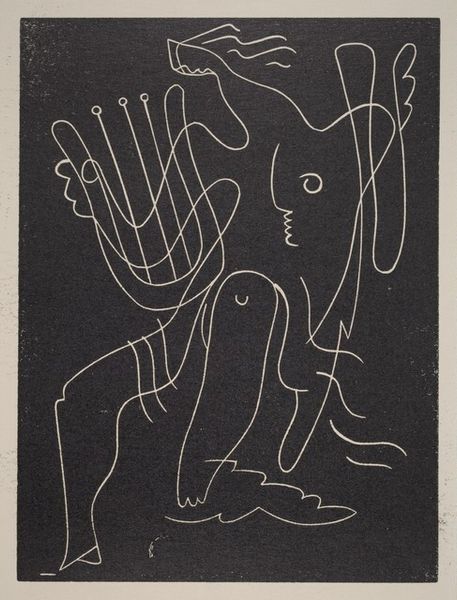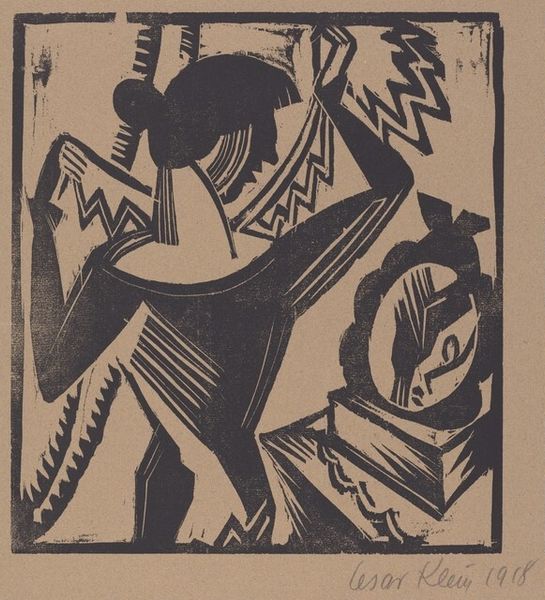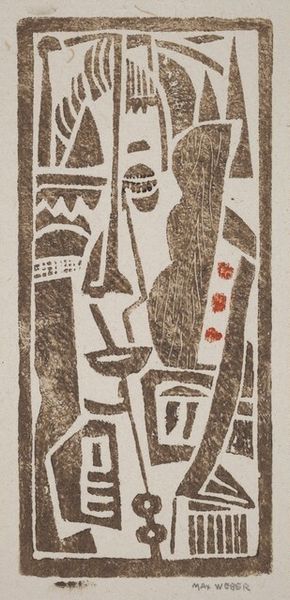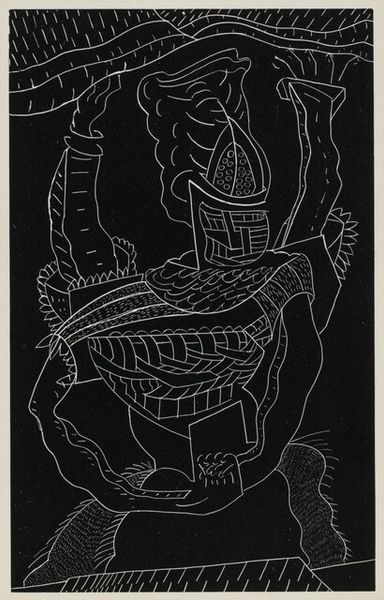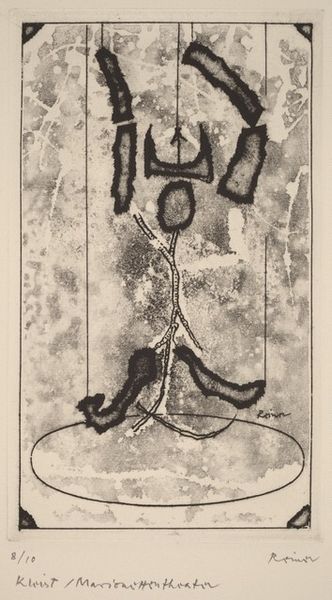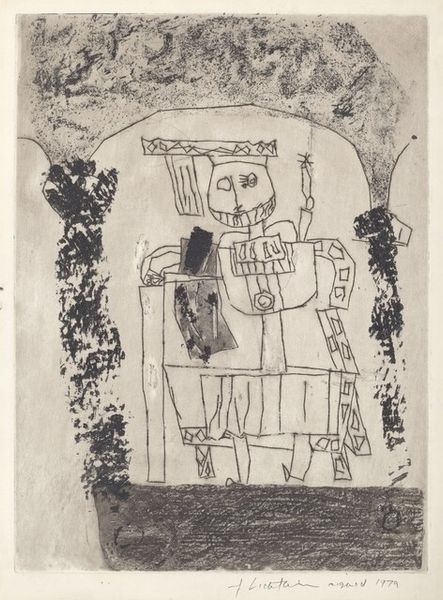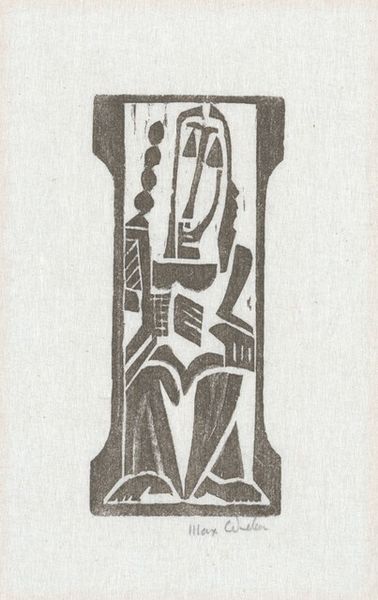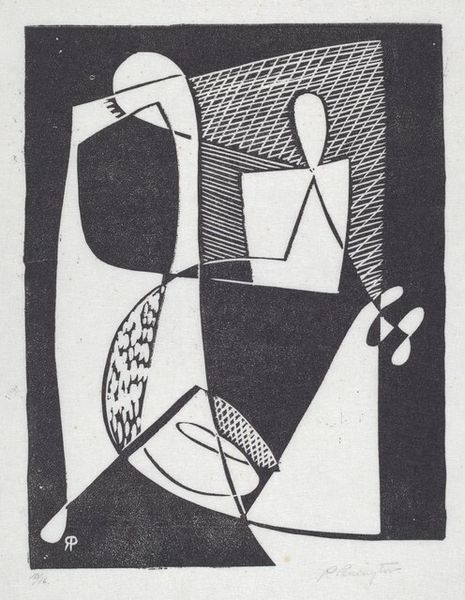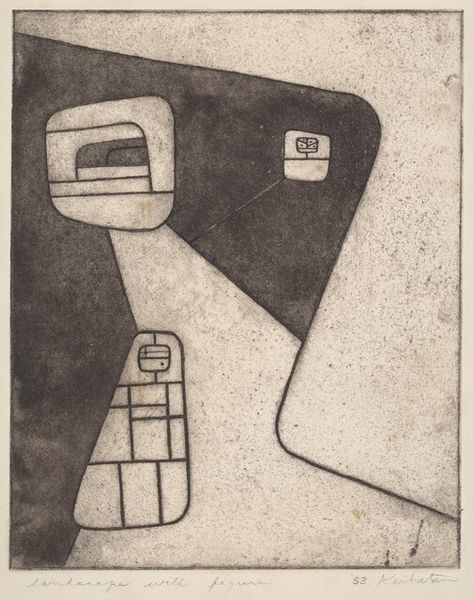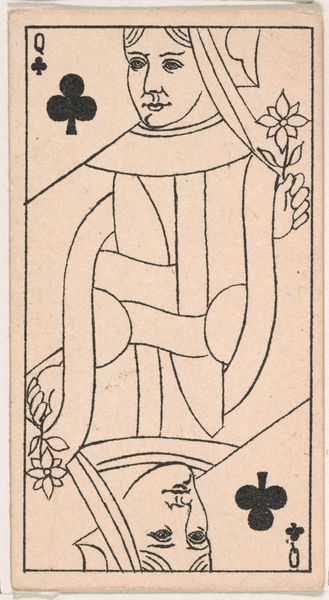
Herec, ktery kdysi hrával Romea (The Actor Who at One Time Played Romeo) c. 1960s
0:00
0:00
drawing, graphic-art, print
#
drawing
#
graphic-art
# print
#
figuration
#
linocut print
#
line
#
pen work
#
modernism
Dimensions: block: 34.5 x 24.2 cm (13 9/16 x 9 1/2 in.) sheet: 48 x 34 cm (18 7/8 x 13 3/8 in.)
Copyright: National Gallery of Art: CC0 1.0
Editor: This linocut print, "Herec, ktery kdysi hraval Romea (The Actor Who at One Time Played Romeo)" by Zdenek Seydl, is from the 1960s. It's a striking image; the stark contrast really grabs your attention. I'm intrigued by the almost hieroglyphic quality of the lines. How do you interpret this work? Curator: The piece's power lies precisely in that formal opposition: the flat, unrelieved black background against the sharp, linear white drawing. Note how the lines themselves define both the figure and its adornments – the actor and his, let us presume, theatrical garb. Observe how Seydl avoids shading or modeling; everything exists on a single plane, emphasizing the flatness of the print itself. Editor: So, you're saying the meaning is inherent in the line itself, in the composition? It feels almost like a deconstruction of a character. Curator: Precisely. The reduction of form to its most basic elements, to line and shape, compels us to consider what truly constitutes the 'actor' or 'Romeo'. What remains when the flourishes are removed? Notice the suggestion of a face, abstracted, almost animalistic. This forces us to question the essence of the figure beyond costume or role. Editor: That’s interesting. I hadn't considered the reductionist aspect so directly. Does the title then serve as a kind of ironic counterpoint, reminding us of what's been stripped away? Curator: It introduces a layer of complexity to the relationship between signifier and signified. We're left to ponder the gap between the memory of Romeo and the present state of the actor, rendered only in these graphic, suggestive lines. This starkness reflects the broader artistic movement, concerned with abstracting the objective world and exposing deeper structures. Editor: I see it now. By focusing on the purely formal qualities, we can decode the essence of the subject itself. Thanks! Curator: Indeed. This engagement, through rigorous visual analysis, expands our understanding of how meaning is constructed.
Comments
No comments
Be the first to comment and join the conversation on the ultimate creative platform.

